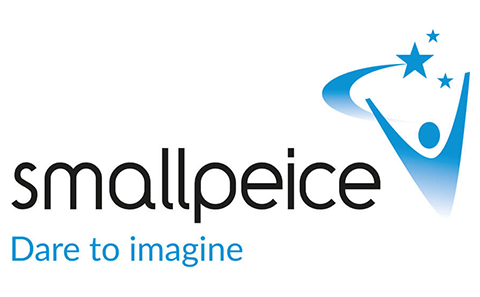
Smallpeice Trust
Sponsor

This initiative has been developed in partnership with the UK Electronics Skills Foundation (UKESF), and with the sponsorship of organisations including the Smallpeice Trust, and support and donations from a wide range of companies, charities and other organisations.
The Music Mixer circuit board incorporates core electronics concepts suitable for A-level Physics students.
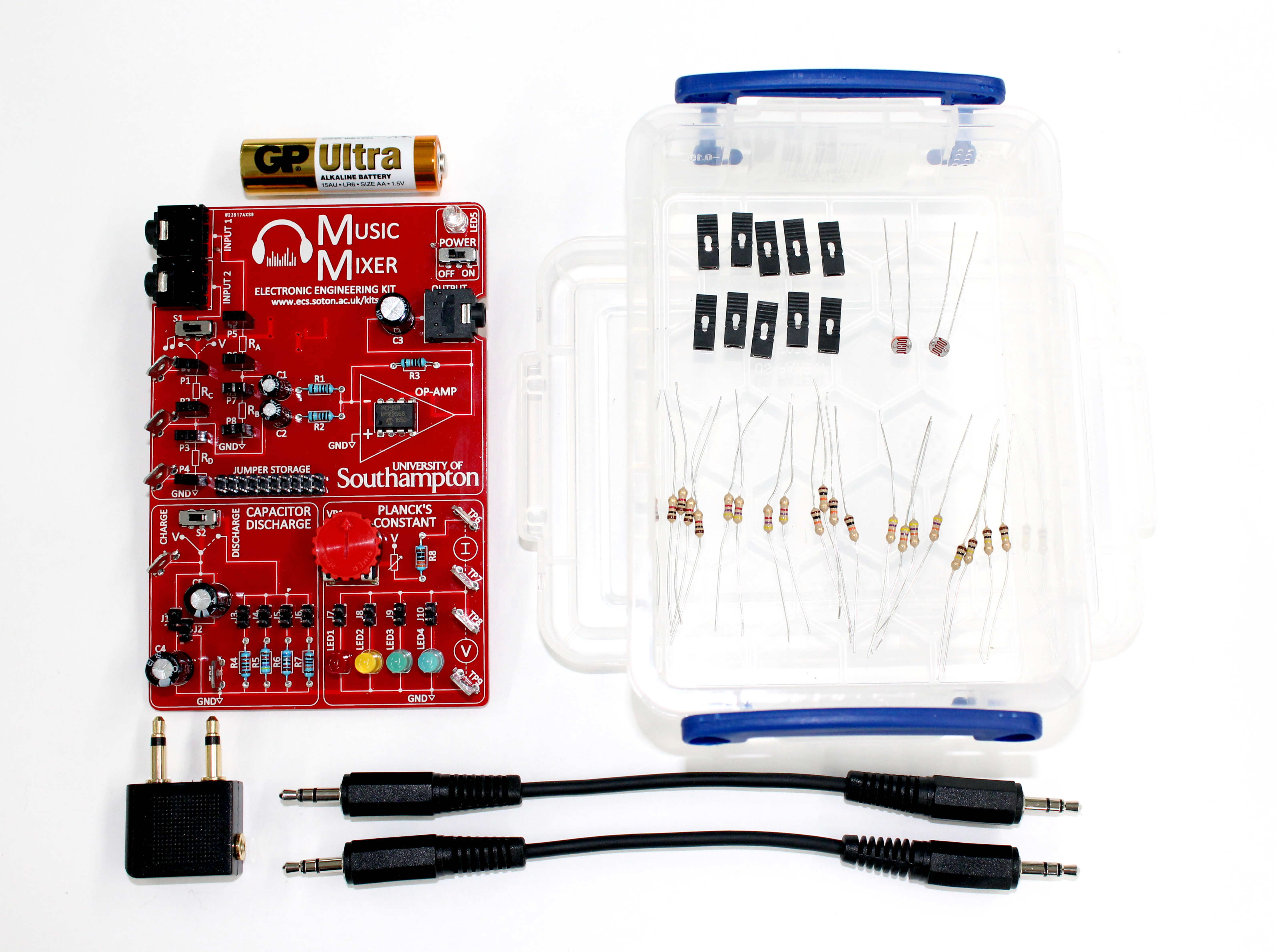
The music mixer kit combines two audio signals, for example music from mobile phones, enabling users to control the volume by experimenting with different electronic components, learn about electronic sensors (e.g. LDRs) and resistor dividers.
The design aims to expose all components and demystifies electronics for students.
The board also has dedicated sections for determining Planck’s constant – by measuring and plotting the voltage and current through four differently coloured LEDs – and experimenting with capacitor discharge.
The kit is currently not available to purchase, but limited numbers are being provided to schools for free. Schools/colleges interested in receiving kits, or organisations interested in sponsoring the scheme, can join our mailing list to find out more.
We are building teaching resources around these boards, for example our online training video. If you would like to contribute resources, please contact us.
The students have really enjoyed using them and exploring independently
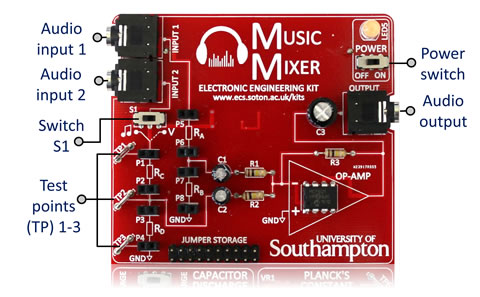
This introduces potential dividers using an audio mixer circuit. The board has two audio input channels that are mixed together using an amplifier. The volumes of the two channels are controlled by potential dividers where the resistor values can be changed or exchanged with LDRs, or other resistive elements, to control the level of each channel.
This tutorial video walks viewers through the typical use of the Music Mixer and the experiment described in the accompanying exercise notes.
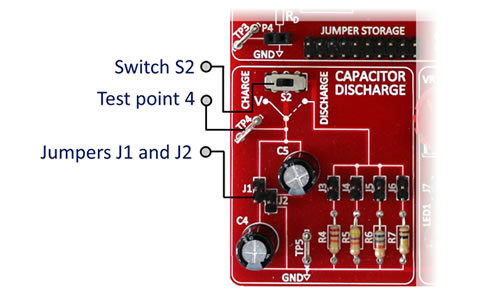
This allows students to explore the discharging of series and parallel capacitors through different resistances. Jumpers J1 and J2 allow the capacitors to be connected in series or parallel.
This tutorial video walks viewers through the typical use of the Capacitor Discharge Section part of the kit, and the experiment described in the accompanying exercise notes.
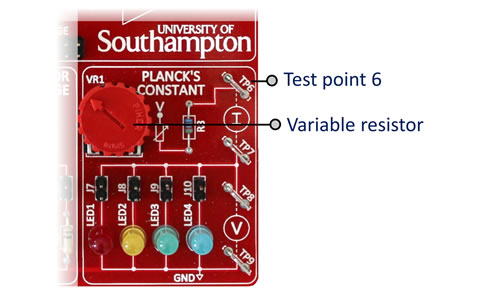
This allows students to estimate Planck’s Constant by measuring the voltage and current characteristics of a range of different colour light emitting diodes (LEDs). A spreadsheet is provided for students to enter measured values, and estimate Planck’s Constant.
This tutorial video walks viewers through the typical use of the Planck’s Constant part of the kit, and the experiment described in the accompanying exercise notes.
The kit really allowed me to focus in on the lesson as it removes the set up … The students were engaged as they have never experienced of this type of Electronics before. The results they get are fantastic
The videos below enable you to find out more about the Music Mixer kit, and the electronic engineering principles that make it work.
This video explores the potential dividers on the Music Mixer kit, how they are used to mix the two input channels, and the wider applications of this technology.
This video explores the functionality of an operational amplifier, how it is used in the Music Mixer kit, and some of the other uses of this widely used electronic component.
This video explores the OpAmp on the Music Mixer kit, and its configuration as a summing amplifier.
This board is brilliant – I love it and know it is a fantastic piece of kit
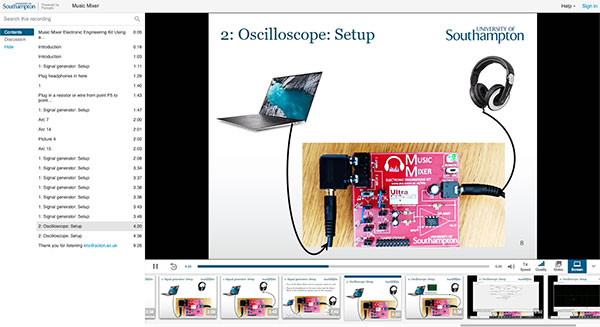
To provide training to teachers who were not able to travel to the University to attend one of our CPD workshops, we have recorded a dedicated video to provide some additional guidance.
The video guides users through the process of connecting the Music Mixer Electronic Engineering Kit to a computer, using the computer as a signal generator and oscilloscope, and using it to demonstrate the interference of waves.
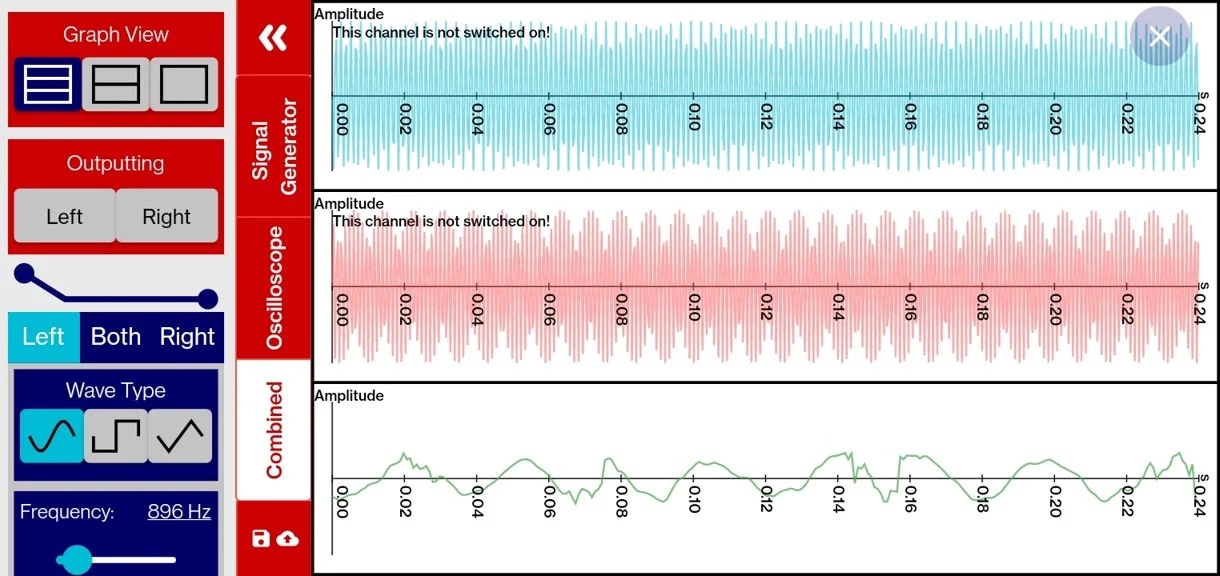
In conjunction with the UKESF, a team of undergraduate students at the University of Southampton developed an Android companion app to use with the Music Mixer kit. This supports and extends the board functionality by providing tools such as a signal generator and oscilloscope. It also be used to support in a classroom environment to hold the instructions on how to run the experiments relating to the boards.
The University cannot accept responsibility for external websites or software.
If the Music Mixer does not work, first of all:
If the Music Mixer still does not work then please email us.
These community-created resources have been developed by teachers while using the kit with their students, and are made available to support teaching and learning activities. The content has not been checked or verified by the UKESF or the University of Southampton. Teachers should verify the correctness of the content and suitability for their students/syllabus before using.
The University cannot accept responsibility for external websites.
It is essential that we maintain student engagement in Physics and Computer Science at A-Level as these are the gateway to engineering, hence our interest in working with UKESF and the University of Southampton to support teachers to inspire students’ interest in these subjects.

Sponsor
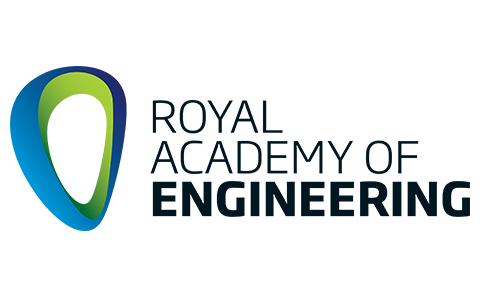
Supporter
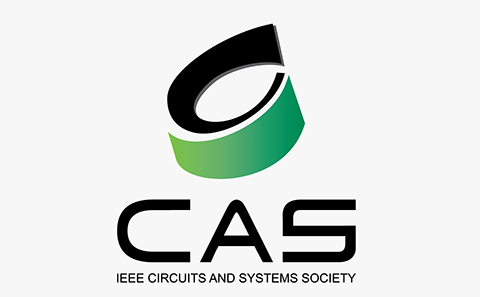
Supporter

Supporter

Supporter

Supporter

Supporter
Donor
Donor
Donor
Donor
Donor
Donor
Donor
Donor
Donor
Donor
Donor
Donor
Donor
Donor
Donor
Donor
Donor
Donor
Donor
Donor
Electronics and technology play a vital role in tackling society’s biggest challenges, but at the moment, not enough young people have the opportunity to experience these subjects in an engaging way, or consider what career opportunities they could lead to.
The A-Level Physics Music Mixer Kit has been created by the following team from the University of Southampton and UK Electronics Skills Foundation:
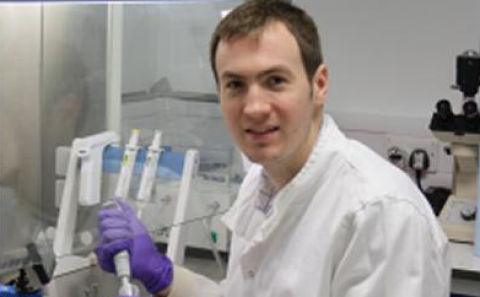
Daniel is a Lecturer in ECS, and is leading the development of the A-Level Physics kits.
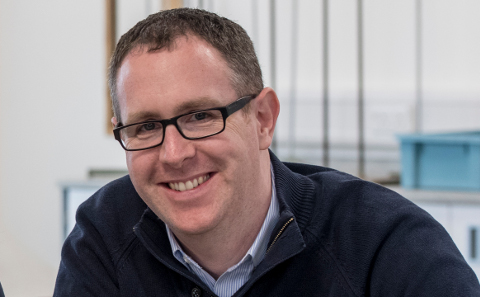
Alex is a Lecturer in ECS, and is leading on professional development activities using the A-Level Physics kit.

Geoff is a Professor and Director of Outreach in ECS, and founded the A-Level Physics kit project.

Stewart is the CEO of the UK Electronics Skills Foundation, and has led on securing funding to get the kits into schools.
For information on when kits are available, and other developments in the project, please join our mailing list.
For any other enquiries, or to contribute resources, please email kits@soton.ac.uk.